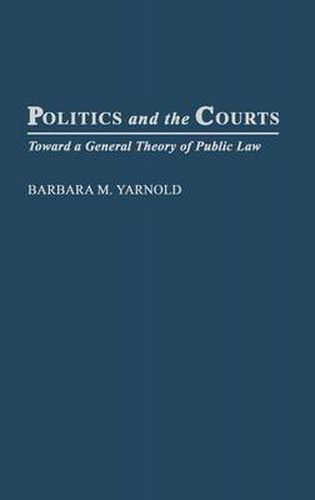Readings Newsletter
Become a Readings Member to make your shopping experience even easier.
Sign in or sign up for free!
You’re not far away from qualifying for FREE standard shipping within Australia
You’ve qualified for FREE standard shipping within Australia
The cart is loading…






In the public-law area, there is an understanding that judicial decision-making is not always objective, that the courts are not constrained by the law and the facts of the case, and that courts are actually policy-makers influenced by extraneous factors that have little to do with the legal and factual matters of a case. Through a combination of an integrative review of the relevant literature in the public-law area and new case studies researched by the author, Barbara Yarnold suggests that the public-law area has discarded the traditional view of the judiciary as a passive interpreter of the law who truly weigh the facts of each case. She examines political and environmental variables that have been used to explain judicial outcomes and develops an original general theory of public law, explaining under what circumstances political variables impact court decisions, and when region, as an environment variable, is related to judicial outcomes. The central question in this study is: when exactly do the law and the facts count?. As Yarnold’s analyses of the judicial decision field draw variables from political science, economics, psychology, and criminal justice, among other fields, this work also suggests that the public law area is multidisciplinary in nature. The book concludes with a case-study examination of interest groups involved in asylum-related appeals and their role in the Sanctuary Movement.
$9.00 standard shipping within Australia
FREE standard shipping within Australia for orders over $100.00
Express & International shipping calculated at checkout
In the public-law area, there is an understanding that judicial decision-making is not always objective, that the courts are not constrained by the law and the facts of the case, and that courts are actually policy-makers influenced by extraneous factors that have little to do with the legal and factual matters of a case. Through a combination of an integrative review of the relevant literature in the public-law area and new case studies researched by the author, Barbara Yarnold suggests that the public-law area has discarded the traditional view of the judiciary as a passive interpreter of the law who truly weigh the facts of each case. She examines political and environmental variables that have been used to explain judicial outcomes and develops an original general theory of public law, explaining under what circumstances political variables impact court decisions, and when region, as an environment variable, is related to judicial outcomes. The central question in this study is: when exactly do the law and the facts count?. As Yarnold’s analyses of the judicial decision field draw variables from political science, economics, psychology, and criminal justice, among other fields, this work also suggests that the public law area is multidisciplinary in nature. The book concludes with a case-study examination of interest groups involved in asylum-related appeals and their role in the Sanctuary Movement.